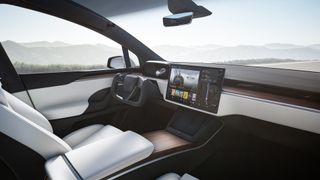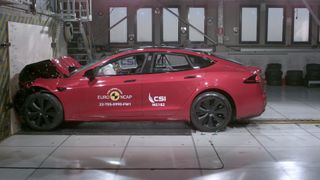Future cars could ditch touchscreens and bring back buttons – all in the name of safety
Europe’s most influential car safety rating program has announced it should ‘incentivize’ manufacturers not to map key car functionality to touchscreens, with the onus on returning to physical controls.
It’s a problem that many drivers have with modern vehicles, as recent trends in car design have seen car interiors move away from almost all physical controls, with even important functions now hidden deep within menus on a touch screen.
For example, Volkswagen came under fire for its infotainment in the ID range, with many owners and reviewers claiming that the UX was extremely frustrating and in some cases distracting, as finding even the simplest feature proved to be a tricky process. VW has since said it did returning to physical buttons in future models and has updated the infotainment offering in recent cars.
According to Auto Expressstated the Technical Director of Euro NCAP (which stands for the European New Car Assessment Programme), Richard Schram: “Euro NCAP will indeed encourage OEMs to have physical, user-friendly and tactile controls for key driving functions such as windshield wipers, warning lights and turn signals. ”
Schram further revealed that the testing protocol would change in 2026, with the safety program awarding points in the ‘Safe Driving’ category for vehicles that have “intuitive, easy-to-use vehicle controls.”
Although Euro NCAP has no power to change legislation, it is one of the most widely recognized safety bodies and the full five-star safety rating is coveted by most manufacturers as it increases buyer confidence in the vehicle’s performance in an accident.
That said, the company is now clearly cracking down on any infotainment use that takes the driver’s gaze away from the road ahead.
Matthew Avery, director of strategic development at Euro NCAP, said Hagerty: “The overuse of touchscreens is an industry-wide problem, with almost every automaker moving key controls to central touchscreens, forcing drivers to take their eyes off the road and increasing the risk of distracted crashes.”
For example, Tesla recently removed the traditional turn signals (turn signals) from Model S and Model X updates, as well as the new Model 3, and moved them to force feedback buttons on the steering wheels.
But some users have stated that they are difficult and unnatural to locate, while operating them when the steering wheel is fully locked (for example when navigating a roundabout) is much more difficult than necessary.
Driving schools in Norway even have that reportedly banned the use of any Tesla model that does not have indicator stems for this reason.
Play it safe
Euro NCAP is a hugely influential figure in the automotive sector, with many of the parameters it has introduced over the years directly influencing the kind of safety technology we now find in modern vehicles.
While I’m all for physical buttons that control core car functionality, we’ve also experienced firsthand how annoying and annoying many modern safety systems can be. Think of Lane Keep Assist and Lane Departure Warnings. Forward Collision Warning and Driver Drowsiness Monitoring are all celebrated by Euro NCAP, but can also be some of the most annoying and distracting features on a modern vehicle.
Lane Keep Assist may work well on a perfectly marked highway or autobahn, but it can also intervene physically if it is not necessary on a tight country road, for example.
Kia’s much-vaunted EV9 received a full five-star Euro NCAP rating, but it was the most annoying car I’ve driven in recent years. The endless banging, squeaking and shaking drove me around the bend.
What’s worse is that to achieve the full Euro NCAP rating, these features need to be reactivated every time you restart the car, which means annoying menu diving to disable the unwanted and distracting features on is already distracting itself.
It is clear that Euro NCAP’s intentions are almost always good, but we must be careful that taxing more and more safety features does not have the opposite effect.


